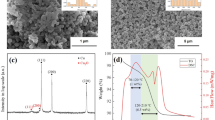Abstract
A recycled packaging material was found to be a PP copolymer after examinations with DSC, FTIR, and TG techniques. It produced 4.39% residue when heated to 800 °C. In addition, SEM microscopic observations revealed some particles dispersed in the recycled PP (recPP) matrix, resulting in a great source for promotion of recPP crystallization temperature. In the present work, NPG, TMB-5, and CaPA were used as β-nucleating agents to modify PP and recPP crystallization behaviors. The results imply that these three nucleating agents are effective for PP to form β crystal in which TMB-5 revealed the best induction and heterogeneous nucleation effects. However, the nucleating effect for NPG decreased when it was added to recPP. The effect of CaPA also weakened, whereas TMB-5 performed well with the optimum content of 0.1%. When CaPA was added together with PCB powder, the β-nucleating effect of CaPA was enhanced, making β crystal as the main form when using only 0.01% CaPA.












Similar content being viewed by others
References
Muniyandi SK, Sohaili J, Hassan A. Mechanical, thermal, morphological and leaching properties of nonmetallic printed circuit board waste in recycled HDPE composites. J Clean Prod. 2013;57:327–34.
Zheng YH, Shen ZG, Cai CJ, Ma SL, Xing YS. Influence of nonmetals recycled from waste printed circuit boards on flexural properties and fracture behavior of polypropylene composites. Mater Des. 2009;30:958–63.
Zheng YH, Shen ZG, Cai CJ, Ma SL, Xing YS. The reuse of nonmetals recycled from waste printed circuit boards as reinforcing fillers in the polypropylene composites. J Hazard Mater. 2009;163:600–6.
Varga J. β-Modification of isotactic polypropylene: preparation, structure, processing, properties, and application. J Macromol Sci B. 2002;41:1121–71.
Chen YH, Mao YM, Li ZM, Benjamin SH. Competitive growth of α-and β-crystals in β-nucleated isotactic polypropylene under shear flow. Macromolecules. 2010;43:6760–71.
Moitzi J, Skalicky P. Shear-induced crystallization of isotactic polypropylene melts: isothermal WAXS experiments with synchrotron radiation. Polymer. 1993;34:3168–72.
Varga J, Mudra I, Ehrenstein GW. Highly active thermally stable β-nucleating agents for isotactic polypropylene. J Appl Polym Sci. 2001;15:20–3.
Tjong SC, Shen JS, Li RKY. Impact fracture toughness of β-form polypropylene. Scr Mater. 1995;33:503–8.
Varga J, Ehrenstein GW, Schlarb AK. Vibration welding of alpha and beta isotactic polypropylenes: mechanical properties and structure. Express Polym Lett. 2008;2:148–56.
Ma YJ, Xin ML, Xu K, Chen M. A novel β-nucleating agent for isotactic polypropylene. Polym Int. 2013;62:744–50.
Xu JT, Feng LX, Yang SL, Wu YN. Separation and identification of ethylene-propylene block copolymer. Polymer. 1997;38:4381–5.
Chalmers JM. Infrared spectroscopy in analysis of polymers and rubbers. Encyclopedia of analytical chemistry. Hoboken: Wiley Online Library; 2000.
Hamid SH, Prichard WH. Application of infrared spectroscopy in polymer degradation. Polym-Plast Technol. 1988;27:303–34.
Rabello MS, White JR. The role of physical structure and morphology in the photodegradation behaviour of polypropylene. Polym Degrad Stab. 1997;56:55–73.
Motsoeneng TS, van Reenen AJ, Luyt AS. Structure and properties of a β-nucleated polypropylene impact copolymer. Polym Int. 2015;64:222–8.
Tordjeman P, Robert C, Marin G, Gerard P. The effect of α, β crystalline structure on the mechanical properties of polypropylene. Eur Phys J E. 2001;4:459–65.
Tjong SC, Shen JS, Li RKY. Mechanical behavior of injection molded β-crystalline phase polypropylene. Polym Eng Sci. 1996;36:100–5.
Chen HB, Karger-Kocsis J, Wu JS, Varga J. Fracture toughness of α- and β-phase polypropylene homopolymers and random-and block-copolymers. Polymer. 2002;43:6505–14.
Kang J, Weng GS, Chen ZF, Chen JY, Cao Y, Yang F, Xiang M. New understanding in the influence of melt structure and β-nucleating agents on the polymorphic behavior of isotactic polypropylene. RSC Adv. 2014;4:29514–26.
Acknowledgements
This project was supported by Science and Technology Projects of Guangdong Province, China (Grant No. 2013B021300019).
Author information
Authors and Affiliations
Corresponding author
Rights and permissions
About this article
Cite this article
Xian, J., Li, M., Lin, Z. et al. Crystallization and thermal behavior of recycled polypropylene composites containing nonmetallic printed circuit board powder and β-nucleating agents. J Therm Anal Calorim 130, 869–878 (2017). https://doi.org/10.1007/s10973-017-6445-7
Received:
Accepted:
Published:
Issue Date:
DOI: https://doi.org/10.1007/s10973-017-6445-7




